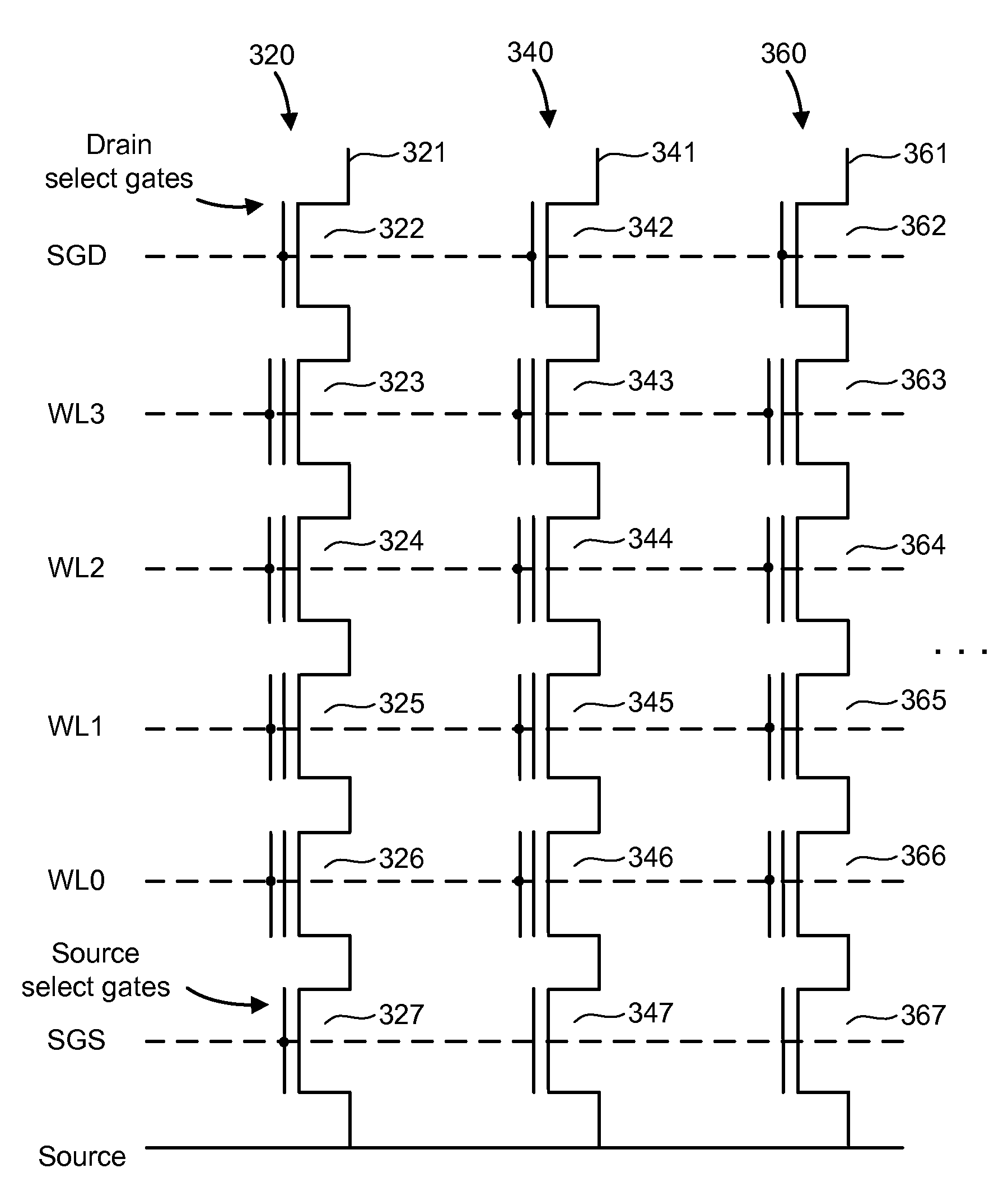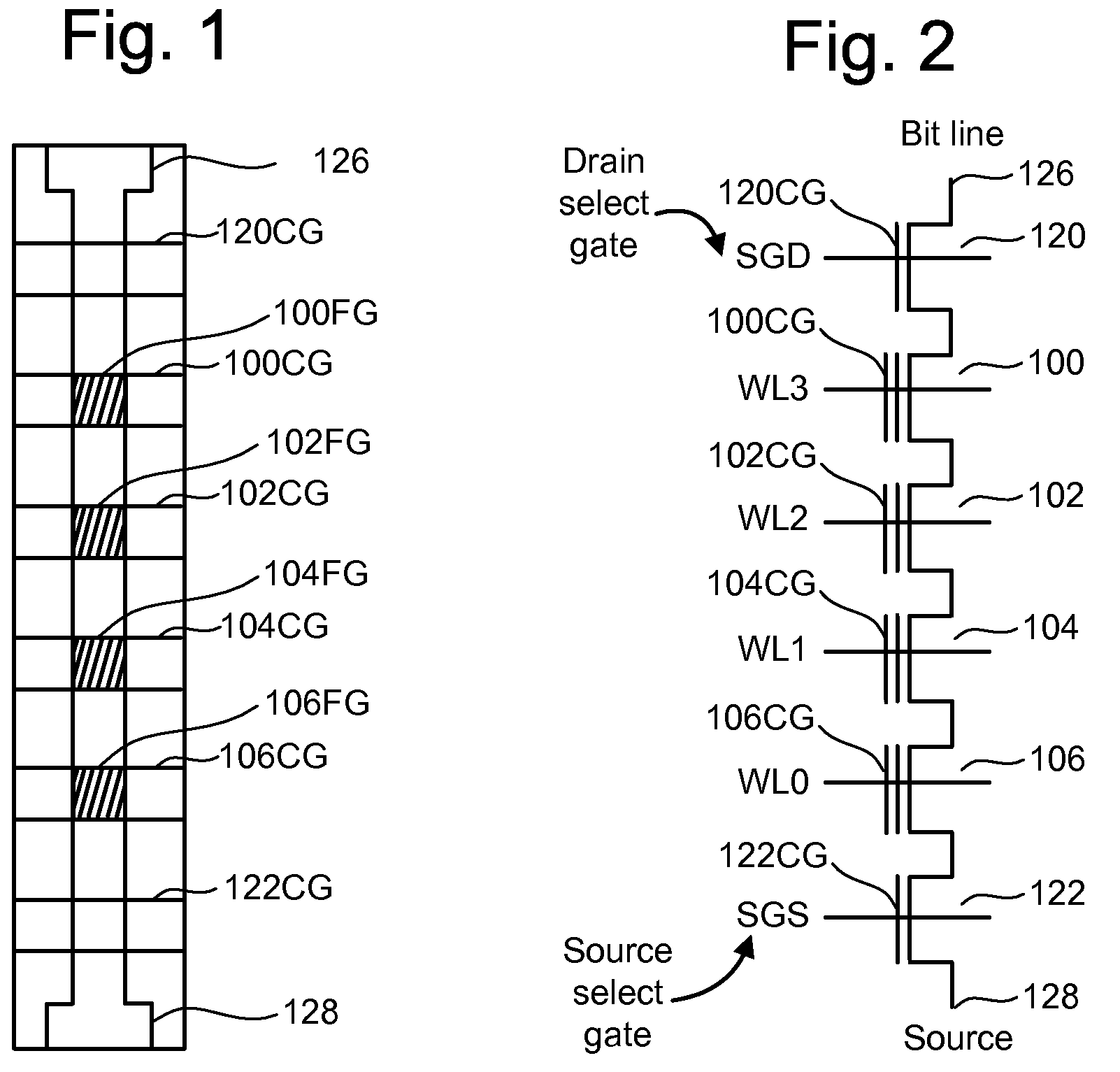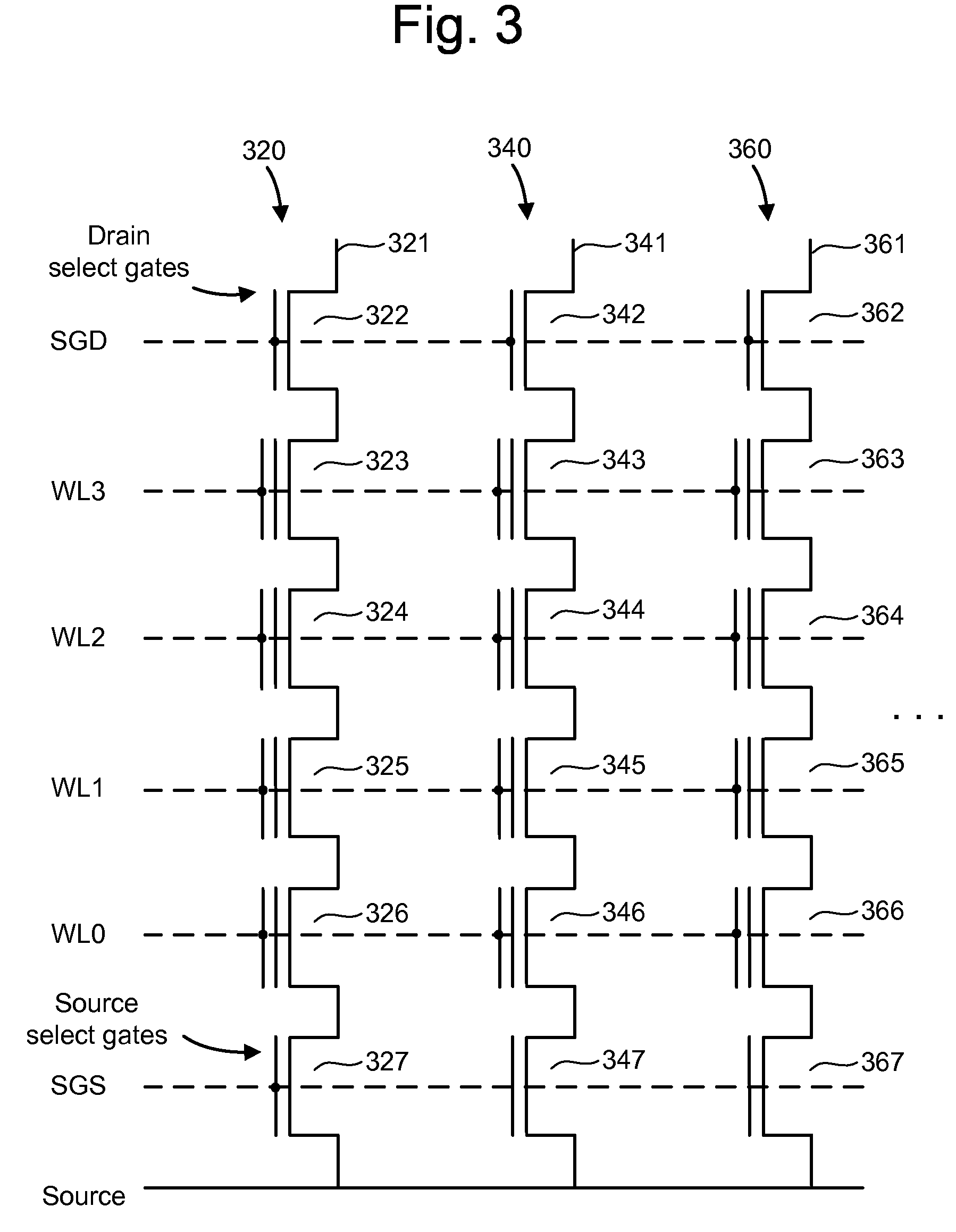Programming algorithm to reduce disturb with minimal extra time penalty
a programming algorithm and extra time penalty technology, applied in the field of nonvolatile memory, can solve problems such as program disturbance, program disturbance, program interruption, etc., and achieve the effect of reducing program disturbance and reducing programming tim
- Summary
- Abstract
- Description
- Claims
- Application Information
AI Technical Summary
Benefits of technology
Problems solved by technology
Method used
Image
Examples
case # 1
[0080]Case #1 involves 13 verify operations at VV-A and / or VV-AL, 13 verify operations at VV-B and / or VV-BL and 11 verify operations at VV-C and / or VV-CL, for a total of 63 verify operations. Additionally, 22 program loops (e.g., program pulses) are applied. A total of 85 operations are thus performed. Case #2 involves 11 operations at VV-C, 13 operations at VV-A and / or VV-AL and 13 verify operations at VV-B and / or VV-BL, for a total of 63 verify operations. Additionally, 30 program pulses (in total, over two programming passes) are applied. A total of 93 operations are thus performed. Case #3 involves 4 verify operations at VV-CLL, 13 verify operations at VV-A and / or VV-AL, 13 verify operations at VV-B and / or VV-BL and 8 verify operations at VV-CL and / or VV-C, for a total of 65 verify operations. Additionally, 24 program pulses (in total, over two programming passes) are applied. A total of 89 operations are thus performed. Thus, case #3 saves the time involved in applying six addi...
PUM
 Login to View More
Login to View More Abstract
Description
Claims
Application Information
 Login to View More
Login to View More - R&D
- Intellectual Property
- Life Sciences
- Materials
- Tech Scout
- Unparalleled Data Quality
- Higher Quality Content
- 60% Fewer Hallucinations
Browse by: Latest US Patents, China's latest patents, Technical Efficacy Thesaurus, Application Domain, Technology Topic, Popular Technical Reports.
© 2025 PatSnap. All rights reserved.Legal|Privacy policy|Modern Slavery Act Transparency Statement|Sitemap|About US| Contact US: help@patsnap.com



